Natural Modern Landscapes
How to avoid planting in grids and lines to get a modern look
By Maureen Gilmer, landscape designer, author and LandscapingNetwork.com columnist
-
 Architectural plants used in creatively matched containers turns them into living sculpture.
Architectural plants used in creatively matched containers turns them into living sculpture.
-
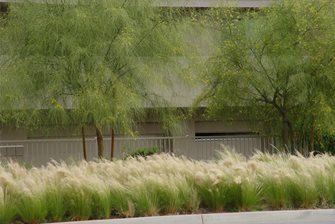 These grasses were painstakingly laid out on a grid, but when the plants mature this painstaking care disappears into a single textured mass.
These grasses were painstakingly laid out on a grid, but when the plants mature this painstaking care disappears into a single textured mass.
-
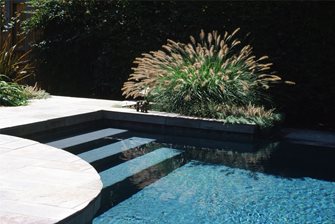 Rather than mixed planting here, a single grass proves far more dramatic, allowing the sweeping lines of the pool to stand out.
Rather than mixed planting here, a single grass proves far more dramatic, allowing the sweeping lines of the pool to stand out.
-
 Ceramics for modern architecture need not be sleek and space age.
Ceramics for modern architecture need not be sleek and space age.
-
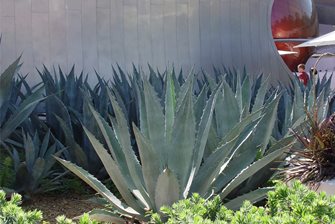 Architectural plants need not be laid out in unnatural grids.
Architectural plants need not be laid out in unnatural grids.
-
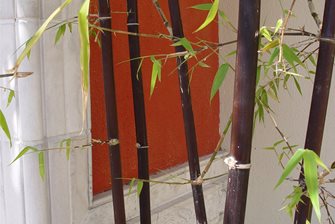 Black bamboo offers outstanding black rods that may be thinned and pruned to accent modern spaces.
Black bamboo offers outstanding black rods that may be thinned and pruned to accent modern spaces.
-
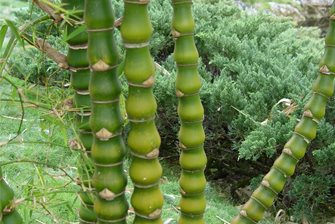 Any time you find plants with bold forms like the stems of Buddha's belly bamboo, it will be outstanding in modern gardens.
Any time you find plants with bold forms like the stems of Buddha's belly bamboo, it will be outstanding in modern gardens.
-
 Cacti and succulents are the most favored choices for modern gardens and their outdoor living spaces.
Cacti and succulents are the most favored choices for modern gardens and their outdoor living spaces.
-
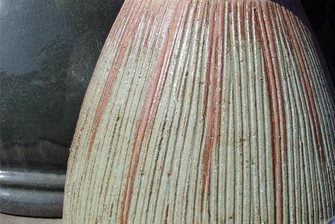 Muted tones and interesting textures are the hallmark of modern design.
Muted tones and interesting textures are the hallmark of modern design.
-
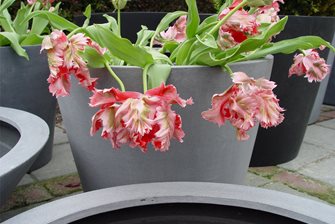 Parrot tulips are among the favorite container color for modern designers.
Parrot tulips are among the favorite container color for modern designers.
- 1
- 2
- 3
- 4
- 5
- 6
- 7
- 8
- 9
- 10
Famed modern architect Richard Neutra spoke for his fellow designers who pioneered simplified building design during the early 20th century. He said, "Place man in relationship to nature; that's where he developed and where he feels most at home!" Their intent was to let nature indoors through glass panels and an open floor plan. Unfortunately designers today have neglected this relationship to nature, extending the same Spartan approach into the landscape with a single planting concept for modern landscapes: planting in grids and lines. Below are four ways to plant a naturalistic modern garden by using architectural plants, textural and spreading plants, and tips for planting in containers.
- Pro Tip: A garden is a complex of aesthetic and plastic intentions; and the plant is, to a landscape artist, not only a plant - rare, unusual, ordinary or doomed to disappearance - but it is also a color, a shape, a volume or an arabesque in itself.--Roberto Burle Marx
Why to Avoid Planting in Grids and Lines for a Modern Look:
- Simple grids may not remain that way as plants age, die out or become distorted by weather.
- If you plant in a line, it's nearly impossible to find a perfectly-sized replacement for a single plant lost to match those remaining.
- Grasses planted on a grid quickly lose their unique form and the texture turns into a large billowy mass.
Key Takeaways:
- Architectural plants (those with bold forms) are best when utilized as single specimens surrounded by smaller supportive forms of plants.
- Textural plants are the soft, fine plants that exploit the contrast of the modern architectural style.
- Low growing, sprawling plants are ideal for filling in around featured architectural plants.
When planting containers in a modern garden, the general rule of thumb is to contrast the shape of the pot with that of the plant.
Use Architectural Plants An architectural plant is one that presents a very bold form. These stand out distinctly from bushy trees and shrubs which tend to be more cloud-like in shape. Architectural plants can be columnar, flat topped, poodled, pyramidal, or feature large uniquely shaped and colored leaves. They may be naturally shaped this way or clipped to maintain a certain form. The most common example is the palm tree, a warm climate preference among modern designers. This presents a living column topped with a tuft of foliage. They often use palms in linear plantings because they share a uniformity of growth. Plant ten of them and they all mature to the same size and shape. However, in residential applications there isn't room nor benefit from linear plantings of palms, nor does that benefit the site overall. Architectural plants are best when utilized as single specimens. But don't fall into the trap of thinking that one great plant is enough. The key is to integrate smaller supportive forms around the base of the big one, so that it's like a naturalistic community. This provides more green foliage and visual interest in the view.
"Originally, there was not a single plant in their backyard - it was entirely grass," remembers Skievaski. The homeowners wanted to add color and texture to the yard, but didn't want anything high-maintenance. They also requested that the yard have a natural, rustic style.
Use Textural Plants With so many solid bold forms in this architectural style, adding soft fine textured plants to the landscape really exploits the contrast. The most well-known, fine textured plants are ornamental grasses which become highly animated in the slightest breeze. Fountain grass, Pennisetum setaceum, is among the most widely used choices due to its fast growth. Each plant becomes a soft fountain shape in the landscape. There is also a unique play of light and dark because fine textured plants tend to be semi-transparent. Using them in key parts of the landscape as singles or small odd numbered groups where the rising or setting sun will back-light the foliage results in truly unique effects. You can do the same after dark with lighting. But if you plant grasses on a grid you quickly lose its unique form and the texture turns into a large billowy mass.
Use Spreading Plants The site plan is how your designer lays out the project with respect to living areas and planted zones. Sometimes an open landscape is best to exploit views, a pool or focal point beyond. When this "floor plan" is laid out, the essential paved connections are created first, then left over spaces are massaged into planting areas. Designers should give planting spaces more curvilinear forms with rounded corners and irregular shapes. Those areas designated for planting can become a drift of foliage and color when filled with ground hugging plants.
These plants may be loosely termed groundcovers, but those that are of minimal height become ideal for filling areas that feature larger architectural plants. Low growing shrubs and vines allowed to sprawl and herbaceous groundcovers can offer a wide range of color and textures from alpine succulents to creeping fig. When the groundcovers are blended into uniquely finished paving, the result can become truly dynamic. Modern designers also love these plants for dangling off edges of structures, retaining walls and high points of the landscape.
How to Arrange Container Plants In modern landscapes where there is an abundance of pavement and few places to plant into natural soil, containers become a vital component. In modern design, containers are always overly large, which allows them to contain architectural plants or textural statements.
Containers are best selected for their precise geometric forms. A box, cylinder or bowl each asks for different contents. In general, contrast the shape of the pot with that of the plant. For example, an Italian cypress with its tall, narrow form is best used in a box rather than a cylinder. Also, beware of very wide, shallow bowls that look fabulous but may lack sufficient depth for a solid root zone. If too shallow the soil mass may become overheated in summer, causing contents to discolor or dry out very quickly.
Select containers for their texture and color too. Many hand made modern ceramics are fabulous with succulents because they are so uniquely shaped. The exterior glaze, imprinted pattern or color makes it a work of art, with the plant sometimes merely an afterthought to highlight the one of a kind ceramic creation.
With pots as with the plants, remember that more of them is not always better. A series of identically planted pots can be quite effective at highlighting a particular architectural detail, but it's not the only solution. Similar pots with different plants can be grouped to create a far more interesting look that plays off the new growth, blooms or seasonal color.
When you are tempted to resort to grids and lines to accent your modern home landscape, remember that simple grids may not remain that way as plants age, die out or become distorted by weather. And if you plant in a line, the loss of a single individual makes it nearly impossible to find a perfectly-sized replacement to match those remaining. Insist your designer work harder to create architectural compositions for larger focal points. Ask that she animate the garden with awesome larger ornamental grasses and their reedy kin. Take your time to find just the right containers that make exceptional living sculptures in the landscape. Then when it all comes together you'll discover the true modern garden as the original architects envisioned.
Related:Modern Pond Design
Modern Outdoor Fountains
Modern Front Yard Remodel
|
Maureen "Mo" Gilmer is a landscape designer, author, and speaker about horticulture topics and landscape design. |






